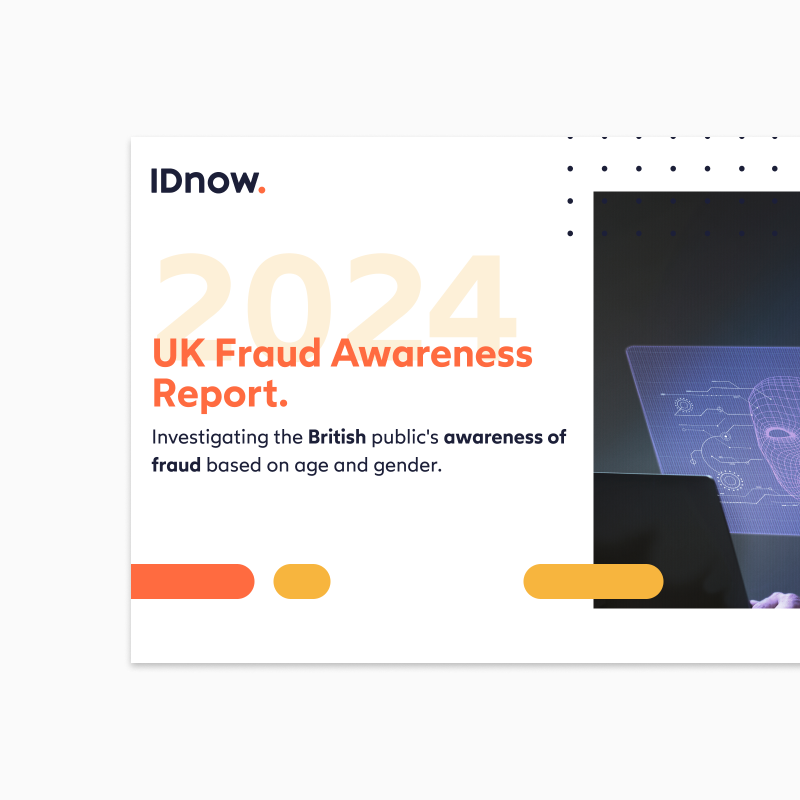From romance fraud to investment scams, there are a multitude of ways that fraudsters use social media to target victims. Here, we explore some of the most common and speak to one man who almost lost it all.
In 2024, it’s safe to say that if you use the internet, you’re more than likely to also use social media. In fact, of the 5.35 billion active global internet users, 5 billion are regular social media users.
Whether you want to look at photos of somebody you haven’t spoken to in 15 years, swipe on photos of somebody you’d like to speak to for the next 15 years, read about the latest conspiracy theory, or apply for a job, there’s a specific social media platform to connect with old and new friends alike.
The beauty of social media is how easily you can connect with people. Unfortunately, the danger of social media is also how easily you can, without any substantial identity verification check, create an account and claim to be whoever you want to be. Simply choose a name, select a photo and hey presto – you have an account. With just a few clicks, you’re free to contact with anyone on the internet. Free to share cat photos, argue why the moon is made of cheese, send your CV, or steal money from a complete stranger.
It starts with a click.
In the first six months of 2023, $2.7 billion was lost through social media fraud. Massive numbers compared to the next most common fraud channel: website and apps, which claimed $2 billion, or emails, which were responsible for the comparatively low figure of just $900 million. Little wonder, then, that for one in four people who’ve been defrauded since 2021, the initial communication began on social media.
As such, it’s likely that you have already been contacted via a scammer, and you may not even know it. Here are the top three types of social media fraud.
Romance scam.
Romance fraud is a type of scam initiated through social engineering, where emotional relationships are created to obtain financial gain or services. Romance scammers often use dating apps, but reports show that social media platforms are becoming even more common. While some dating apps, such as Tinder are beginning to introduce identity verification steps into onboarding, many do not.
[Discover how one woman is exposing romance scams in our blog, ‘What’s love got to do with it? Exposing the romance scammers, with Becky Holmes.’]
Social media account takeover fraud.
37% of UK adults worry about social media fraud, according to our recently released UK Fraud Awareness Report 2024. This fear is well founded, as someone who has access to your social media account can gather valuable information and photos about you and your family and friends for future fraud attacks. They can also post phishing attacks and links to investment scams from your account, lending the scam a convincing air of credibility and authenticity.
Investment scam / pig butchering scam.
One of the most common forms of social media fraud. Investment scams are typically ‘long con’ techniques that take place over a series of weeks or months, with the fraudster slowly establishing trust before presenting the victim with an investment opportunity. Although the website and payment portals shared may look genuine, any money that the victim sends is being transferred directly to the scammer. A variation of the investment scam is the pig butchering scam, which combines elements from romance scams, investment schemes, and crypto fraud.
“We just clicked.”
Anyone can be targeted by social media fraud. Young or old. Blue or white collar. After reading our blog, ‘Welcome to the fraud factory: Home of the pig butchering scam.’ IDnow was contacted by a German entrepreneur who realized that he had been defrauded. Below, we share his story:
Background.
I am an executive of a tech startup based in Europe, and 2023 marked a significant turning point for our company as it transitioned into a stock corporation. As the CEO, my primary responsibilities included securing financing, managing investor relationships, and selling shares to fuel the growth of the company. The second quarter of 2023 was particularly challenging, filled with numerous investor meetings and a determined push to promote our investment opportunities through Google Ads. It was during this period that I was contacted by a seemingly enthusiastic investor over LinkedIn, setting off a chain of events that would ultimately lead to the downfall of the company and my personal life.
The encounter.
In early May 2023, I received a message on LinkedIn from a young lady expressing her interest in investing in our stock corporation. Intrigued by her enthusiasm and apparent financial success, I engaged in a conversation with her. We quickly transitioned from LinkedIn to Telegram, and eventually she asked to switch to WhatsApp, and we exchanged phone numbers. She presented herself as a 37-year-old, successful investor in the art industry, with numerous investments in art galleries, including one in Hamburg.
As our conversations continued, she began sharing details about her immense wealth and philanthropic endeavors, especially her interest in Non-Fungible Tokens (NFTs). She frequently flaunted her account balance, boasting of having millions of USDT (cryptocurrency with a value that mirrors the US dollar) at her disposal. She assured me that investing in digital artwork would be a profitable venture for our struggling company.
Under her influence, I started investing in digital artwork on a platform called [removed], which frequently changed its domain. As she gained my trust, she probed for information about my net worth and assets, believing she was dealing with a financially stable partner. In reality, though, our company was facing dire financial straits, and I was desperate to secure the necessary financing to prevent bankruptcy.
The ‘golden opportunity.’
Then came the golden opportunity. She suggested purchasing a highly valuable piece of digital artwork, similar to the popular ‘bored ape’ NFTs, with the intention of putting it up for auction. I agreed to the purchase, spending $850,000, with the expectation that it would be sold for a substantial profit. A week later, it was indeed sold for $8,129,000, bringing immense relief as it seemed like a way to recover our company’s financial troubles and my personal investments.
However, the moment I attempted to withdraw the funds, my joy turned to despair. I was asked to transfer 20% of the auction price, amounting to over $1.6 million, to a different wallet. Subsequently, they demanded an “advanced certification audit,” requiring me to provide extensive personal information, including bank statements, the source of my funds (my house and other assets), and a copy of my passport. A few days later, I received the shocking news that my account had been frozen due to suspicion of money laundering. To regain access, I was told to pay an additional $547,000 fee with a promise of a refund upon a positive outcome of the audit. Late September marked the realization that I had fallen victim to a complex and devastating scam known as pig butchering.
The aftermath.
Despair took hold, and I sought help from white hat hackers in a desperate attempt to uncover the truth and recover my investments. Unfortunately, I encountered fraudulent individuals who claimed to be white hat hackers and extorted thousands of dollars from me under the pretence of uncovering the fraud. Today, the company faces imminent administrative shutdown, forcing the dismissal of all employees, and I am left with no choice but to file for insolvency.
What happened next?
The anonymous reader lost €900,000 in total. In the months since discovering the deception, he has contacted lawyers, forensic hackers and the police, all to no avail.
“The lawyer offered to trace and try to find the responsible company, but as you know, they are typically not registered and change their domains every three months.”
Although the forensic hackers did manage to locate the Wallet that contained the funds, they were unable to crack it, due to its Advanced Information Management Security Computer System (AIM), which was installed by a cyber security group.
It is therefore looking unlikely that he will ever be able to recover the funds, so for the time being, he is focusing on recovering and staying positive.
UK Fraud Awareness Report 2024

What’s so social about social media fraud?
With recent steps by LinkedIn to introduce an identity verification step, could the era of social media anonymity, which inarguably leads to the proliferation of social media fraud, be coming to an end? Considering LinkedIn’s step is only encouraged and not mandatory, the answer is probably “no, not yet…”
Flaws and loopholes also exist in X (formally Twitter) and Meta’s verification strategies, with only paid subscribers able to become verified. Identity verification only works if everybody participates; if it is not mandatory then it’s largely pointless. In fact, according to Becky Holmes, the ‘romance fraud vigilante-turned-author’, the decision to offer verification for a fee is a fraudster’s dream. “Suddenly you have an influx of people pretending to be celebrities who don’t need a blue tick anymore.”
Also, what’s stopping a fraudster just paying for the premium service and benefiting from the associated prestige?
How to protect yourself against social media fraud.
It’s safe to say that the digital identity verification market has never been healthier. Indeed, there were 61 billion digital identity verification checks conducted in 2023, a number that is predicted to grow by 16% to 71 billion by the end of this year. In a world of just 8 billion people, these numbers are staggering.
Most industries, including financial services, gambling, mobility, travel, and telecommunications have all embraced the potential of digital identity verification. Some industries, like financial services remain at the forefront of digital identity verification adoption, as they are required by regulations to have certain Know Your Customer and identity checks in place. While identity verification can help businesses meet compliance challenges and protect their business and customers from fraud, other industries are motivated more by its ability to optimize processes and scale their business.
So, until social media platforms adopt meaningful and comprehensive identity verification, users should connect with caution. Here are three top tips to protect yourself against social media fraud.
- Stay aware.
From the latest terms, like social engineering or deepfakes, it’s important to have a rudimentary understanding of what they include, so that you can remain vigilant, and know what steps to take if you are suspicious of a new contact.
- Don’t just click.
Never click on links from your social media contacts, especially if they are new ‘friends.’ Only move to encrypted channels when you are totally sure that they are who they say there are, and of their intentions. If you suspect that your friend’s account has been hacked, contact them via a secure platform to make sure it’s them.
- Don’t send.
Never send money to a social media contact. Regardless of how many times you’ve messaged, how well they know you, or how good the opportunity is. Beware of investment platforms, and crypto payment portals, as criminals are incredibly skilled in creating fake websites.
How IDnow helps prevent fraud.
IDnow offers comprehensive fraud prevention solutions to safeguard against various types of fraud, including social engineering, fake IDs, identity fraud, and more. Our automated document verification and biometric checks, including selfie and face match, verifies users’ identities with precision, while our passive liveness detection feature adds an extra layer of security, ensuring that genuine customers are verified seamlessly.
IDnow also regularly runs education and awareness sessions to help clients and their customers recognize and respond to social engineering threats. By combining advanced technology, expert insights, and proactive strategies, IDnow is committed to helping businesses mitigate the risks associated with rising fraud attempts and protect both their reputation and their customers’ trust.
Discover the benefits of KYC in the banking sector.
By

Jody Houton
Senior Content Manager at IDnow
Connect with Jody on LinkedIn



